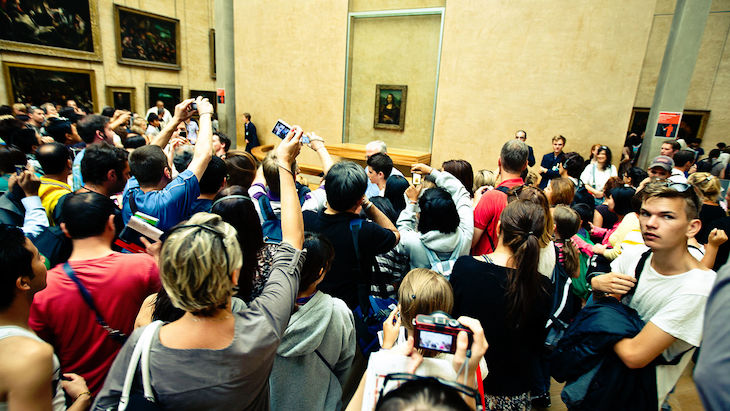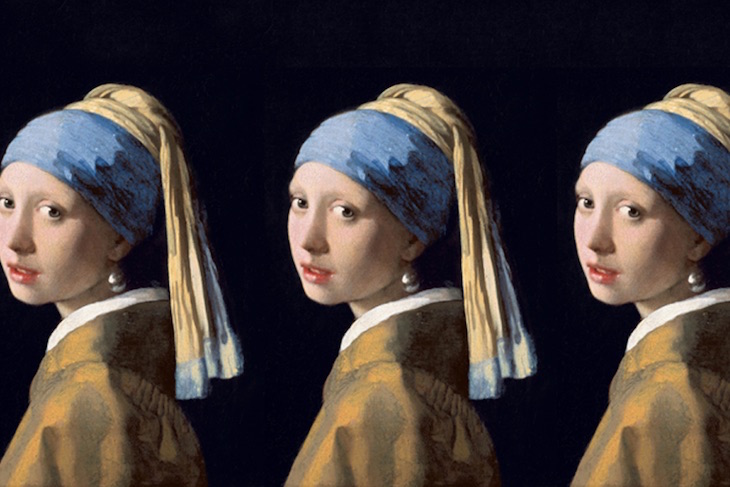Recent advances in digital technology have some art-lovers on edge. Now that we have the ability to digitally scan and 3D-print works of art, will we be compelled to abandon our interest in originals, occupying ourselves with cheaper and more abundant replicas instead?
Examples of this angst are abundant. In a recent Wall Street Journal article about museums supplying donors with digital replicas of their former works, Julian Zugazagoitia, director of the Nelson-Atkins Museum of Art, reassures readers worried about copies creeping into museum collections: ‘We still believe in the aura of artists’ works,’ he said. ‘People who come here need to see the originals.’ In line with this concern, Noah Charney insists that digital replicas cannot share in the ‘aura’ of the original. He fears that if digital replicas become too common, we ‘risk the loss of the most important thing to those who truly know and love art and history: the soul.’ And in response to recent discussions about using digital technology to reproduce the ruins at Palmyra, Jonathan Jones urges that Palmyra ‘must not be turned into a fake replica of its former glory.’
However, although advocates of the artwork’s aura are heavy on handwringing about our future in the digital wasteland, they tend to offer little argument for their concerns. Charney’s considerations against digital replicas tend to just beg the question. For instance, he worries that replicas might erode interest in original artworks, but it wouldn’t obviously be worrisome if replicas detracted from our interest in originals unless originals have a special aura. Thus, independently of whether there is in fact something special about originals, critics who take this line presuppose what they mean to establish.
So long as we continue to talk of replicas in the same breath as forgeries and copies, we misconstrue their potential function. Granted, Charney, for one, is quick to distinguish digital replicas from the skillful forgeries of art history, such as van Meegeren’s Vermeers, but he does so only to emphasise that these forgeries were great works in their own right, whereas digital replicas are not. Nevertheless, his emphasis remains on telling the replica apart from the original. He claims that ‘experts and passionate amateurs’ can ‘just feel’ the difference between originals and replicas, through an ‘innate’ process that appears to be akin to magic. I suppose those of us who didn’t receive our owl-post admitting us to Hogwart’s School of Artistic Pretension are doomed to our soulless replicas.
Artists working on a replica of Lascaux. Photo: © D Nidos-Département

But maybe replicas can do something besides bring about the end of civilisation. The power of digital replicas becomes clear when we acknowledge what they can do beyond merely stand in for originals. Rather than thinking of replicas as knock-offs, we could conceive of them as akin to maps or models. Maps and models are obviously not replacements for the things that they represent; if they were precisely the same as the places or objects that they modelled, they would cease to be useful (think of the map of the empire described in Borges’s brief story ‘On Exactitude in Science’ which is itself the size of the empire). Rather, they offer us a vantage point that is often otherwise unavailable.
A map allows you to plot a route through the mountains. A model allows you to see the cruciform of the church. Digital replicas offer the promise of allowing us to interact with art in new ways. As art crime specialist Erin Thompson has recently discussed, one advantage of digital replicas is that interested art enthusiasts can touch them, a privilege usually off limits to a typical museum patron. She is particularly interested in the role that digital replicas can play in curbing antiquities looting, but the interest in touching art and artefacts certainly extends beyond the collectors who help drive the market in illicit antiquities. Digital replicas can thus serve as models offering a new form of access to famous artworks: the sense of touch.
The possibilities don’t end there. Digital technology has allowed us to better envision what painted classical antiquities might have looked like, an effect that could be further enhanced by 3D printing. By modulating scale, material, and other features, digital models open up a range of new avenues for exploring and understanding art. As I have recently argued, together with moral and political considerations, these methods could be utilised to help restore our relationship with history. The possibilities for engagement provided by digital replicas could very well increase our interest in originals, prompting us to compare our experiences of models with their source.
Crowds taking photos of the Mona Lisa in the Louvre. Photo: Matt Biddulph/Flickr (used under Creative Commons licence [CC. BY 2.0])

The worry that replicas will lead us to lose interest in originals is just speculation, and it’s not clear what supports it. It’s not as if the ubiquity of reproductions of the Mona Lisa has decreased the size of the throng in the Louvre clamouring to take their own digital photographs. Indeed, this seemingly bizarre practice might indicate something important about digital replicas and their relationship to originals.
The philosopher Carolyn Korsmeyer has argued that an interest in touch (even if only ‘implicit’ touch through proximity) helps to explain our obsession with genuine art and artefacts. Korsmeyer suggests that the experience of genuine items has a distinctive phenomenology, though it is one that is available to anyone, not just connoisseurs. As she puts it, experiences of genuine historical artefacts ‘evoke an impression that gaps of time have been momentarily bridged, bringing the past into the present.’ While this can be a wondrous experience, there is nothing magical about it. Historically significant objects are real-world time-travellers: they only move forward in time, like the rest of us, but their age gives us a kind of transitive access to times that are beyond reach for beings bound by physical laws. It’s a real connection: historical artefacts were actually there, and thus put us in touch with the past in a non-metaphorical sense.
It may seem as if I have just identified a specific way in which digital replicas are lacking: contra Thompson’s contention, replicas cannot put us in touch with the past, because they actually weren’t there. To some extent, I think this is true, though it just confirms my original claim that replicas are not meant to be replacements for originals to begin with. But the behavior of the Louvre photographers also suggest that this conclusion may be too hasty. They don’t want just any digital photo of the Mona Lisa (some copy of a copy of a copy): they want the one they took themselves, at the source. One way of explaining this is by noting that it decreases the levels of removal between the digital reproduction and the original. It suggests that even where digital reproductions are concerned, people still care about the proximity of the replica, and themselves, to the genuine article.
There are still many difficult and interesting questions posed by digital reproduction of art and artefacts. Who should produce them? Who should own them (if anyone)? Should they be open access? What should be reproduced? But once we acknowledge that the power of digital replicas goes beyond some misconceived attempt to replace originals, we can see that they have the power to enhance our engagement with art in new and exciting ways. We should not foreclose on that possibility before we have even begun to fully realise its potential.



